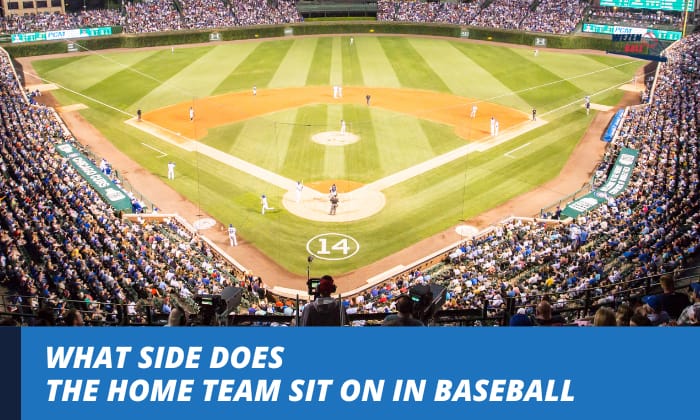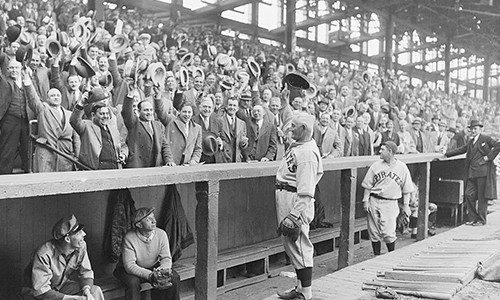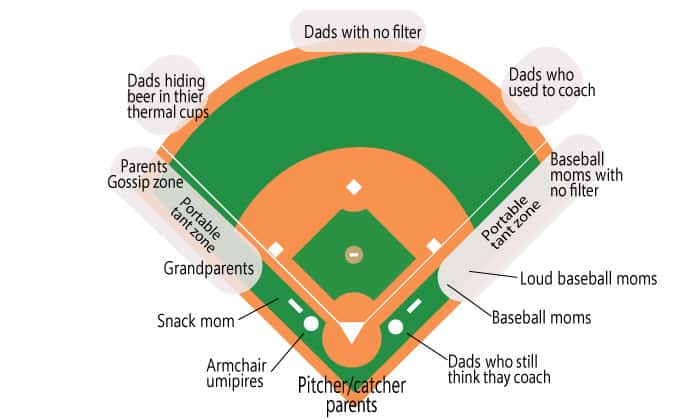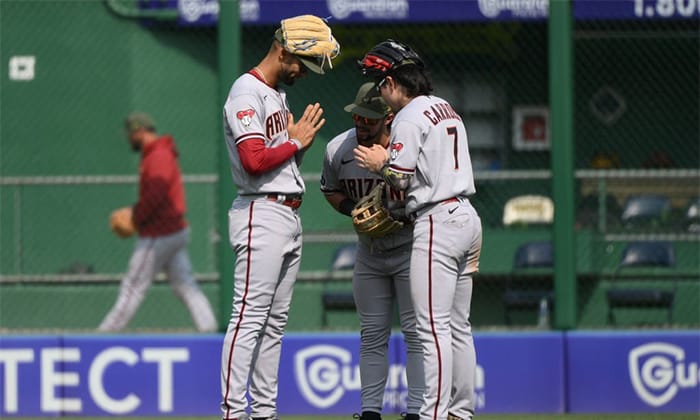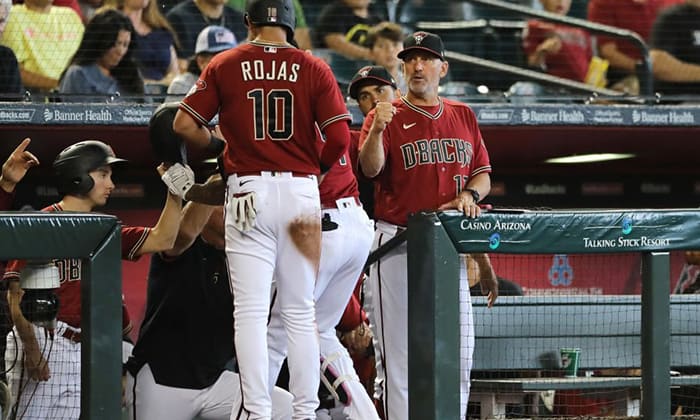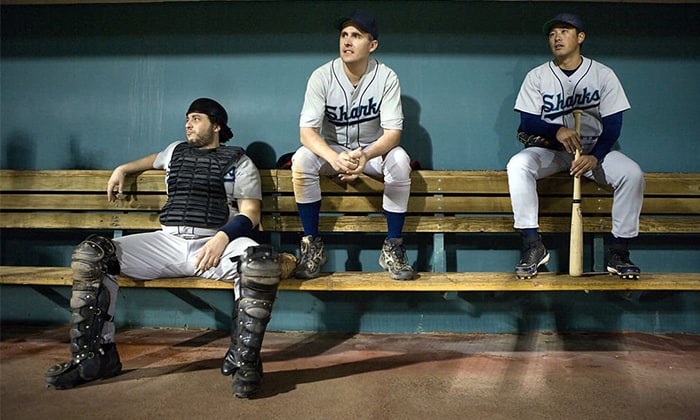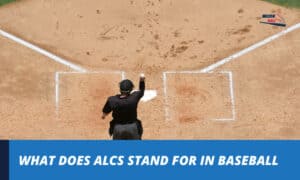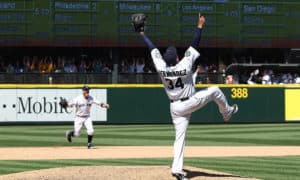Understanding the arrangement of the home team in baseball sheds light on the sport’s operational aspects.
In this article, we will answer your query, “What side does the home team sit on in baseball?” Typically, the home team occupies the dugout on the first base side of the field. Depending on weather conditions and accessibility, the dugout can be on the third base side.
Today, we will delve deeper into the reasons behind this choice, highlighting the strategic considerations and practicalities associated with the home team’s placement.
Contents
- Dugouts – Definition, History, and Tradition
- General Dugout Location for Home Team in Mlb Stadiums
- Reasons Behind the Traditional Dugout Location (Factors That Influence the Location)
- The Role of Dugouts in Baseball Strategy
- The Away Team Dugout
- Popular Mlb Stadiums and Their Dugouts
- Where Should I Figure Out the Location Where to Sit
- FAQs
- Conclusion
Dugouts – Definition, History, and Tradition
1. What is it?
Dugout baseball, an integral part of baseball games, holds a unique significance as designated areas where home team players gather during the game. These sunken structures provide a sheltered space below the playing surface.
This configuration is commonly found in amateur, high school, and in Little League ballparks, where cost considerations often play a significant role in the construction process.
2. History of dugouts
The roots of dugouts trace back to the early days of baseball when players would sit on the sidelines or benches during games.
However, as the sport progressed, the early 1900s saw the construction of dugouts, offering players a specific area to sit and conveniently store their equipment. They also start building roofs over the area to protect the players from the heat and other external factors.
3. A tradition
The home field dugout carries a symbolic representation of home-field advantage. Fans occupying seats close to the dugout can offer vocal support, creating an electric atmosphere that bolsters the players’ morale.
General Dugout Location for Home Team in Mlb Stadiums
In the Major League, the placement of the home dugout in stadiums is not governed by any specific rules or regulations, allowing for a degree of arbitrariness.
As a result, the MLB home team dugout side is placed on either side of the home plate, depending on each venue’s unique characteristics and considerations.
A prominent illustration of this divergence can be observed in the two iconic ballparks.
- Third-base side – At Wrigley Field, the hallowed grounds of the Chicago Cubs, the home side baseball is positioned on the third-base side.
By locating the dugout in left field, if you’re looking from the batter’s box to the field, the third base itself acts as a protective barrier from the sun’s rays, particularly in the later innings of the game.
- First-base side – In contrast, the METS home dugout side is on the first-base side, much like Fenway Park. The reasoning behind this configuration is distinct from that of Wrigley Field.
Although there are a few exceptions, most MLB stadiums position their home dugouts on the first-base side. This is the case for nine ballparks in each league. Conversely, six AL and NL stadiums feature a home dugout on the third-base side.
The distribution of big league dugouts varies from each other, reflecting the diverse characteristics and considerations of each ballpark. The rule of thumb is that the home team sits on what side they’re comfortable with.
Reasons Behind the Traditional Dugout Location (Factors That Influence the Location)
There are 2 primary reasons why a baseball home team chose the traditional dugout location: the movement of the sun and their preference.
These considerations play a significant role in determining the optimal location for the dugout, ensuring the comfort and convenience of the players.
- One crucial aspect to consider is the path of the sun throughout the game. Teams often aim to minimize direct exposure to sunlight, particularly during day games, as it can cause players discomfort and potential visibility issues.
- Another influential factor in determining the dugout location is the preferences of the home team. In most cases, the decision of picking the home side of baseball field for their dugout is given to the home team.
The Role of Dugouts in Baseball Strategy
- The team’s strategy
Dugouts in baseball hold a significant role in the game’s overall strategy. Their location can profoundly impact gameplay, offering teams various advantages related to viewing angles, communication, and quick access to the field.
Example: One notable example of how the dugout impacts gameplay is during pitching changes. It serves as the venue where the dugout managers and pitching coach confer to determine the next pitcher to send onto the field.
- Spectator experience and team morale
Of particular importance is the placement of the home team’s baseball field dugout, as it directly influences the fan experience. Traditionally situated on the first base side of the field, this location brings fans closer to the action, enabling them to support their team actively.
The proximity of fans from the home team side in baseball provides a psychological boost to the home team, as they can feel the energy and encouragement, using it to their advantage during gameplay.
- Gathering space
The dugout bench serves as a central hub for the team throughout the game. It acts as a gathering place where players can communicate, strategize, and regroup. Additionally, it offers a space for players to rest and recover before returning to the field.
The Away Team Dugout
The visitors’ dugout, where the away team takes shelter, is typically positioned along the right-hand side of the ballpark if you stand at home plate and cast your eyes toward the field.
To identify the side where the visitors’ dugout resides, keep an eye out for a helpful landmark: the flagpole. Typically, it proudly stands in one of the right-hand corners of the ballpark, as a reliable indicator of the general vicinity of the visitors’ dugout.
It’s important to bear in mind that while this configuration is commonly observed, variations can be encountered across different stadiums.
To acquire information regarding the location of the visitors’ dugout or which side is home in a particular venue, it is advisable to verify with the venue directly or consult a seating chart.
Popular Mlb Stadiums and Their Dugouts
|
First-Base Side |
Third-Base Side |
|
Atlanta Braves (Truist Park) |
Arizona Diamondbacks (Chase Field) |
|
Baltimore Orioles (Oriole Park at Camden Yards) |
Chicago Cubs (Wrigley Field) |
|
Boston Red Sox (Fenway Park) |
Chicago White Sox (Guaranteed Rate Field) |
|
Cincinnati Reds (Great American Ball Park) |
Cleveland Guardians (Progressive Field) |
|
Colorado Rockies (Coors Field) |
Detroit Tigers (Comerica Park) |
|
Houston Astros (Minute Maid Park) |
Los Angeles Angels (Angel Stadium of Anaheim) |
|
Kansas City Royals (Kauffman Stadium) |
Los Angeles Dodgers (Dodger Stadium) |
|
Milwaukee Brewers (American Family Field) |
Miami Marlins (loanDepot Park) |
|
Minnesota Twins (Target Field) |
Oakland Athletics (RingCentral Coliseum) |
|
New York Mets (Citi Field) |
Pittsburgh Pirates (PNC Park) |
|
New York Yankees (Yankee Stadium) |
San Francisco Giants (Oracle Park) |
|
Philadelphia Phillies (Citizens Bank Park) |
Toronto Blue Jays (Rogers Centre) |
|
Seattle Mariners (T-Mobile Park) |
|
|
St. Louis Cardinals (Busch Stadium) |
|
|
San Diego Padres (Petco Park) |
|
|
Tampa Bay Rays (Tropicana Field) |
|
|
Texas Rangers (Globe Life Field) |
|
|
Washington Nationals (Nationals Park) |
|
Where Should I Figure Out the Location Where to Sit
There are a few options when deciding where to sit at a baseball game. The top choice is the scout seats behind home plate, offering the best game view but at a high cost.
Sitting behind the dugouts is a second pick, providing a good view and potential interactions with players.
If budget is a concern, outfield seats offer an unobstructed view of the game and the chance to catch home run balls. However, these seats lack shade, so sunscreen and hydration are essential.
FAQs
Are there any specific rules governing home team seating in baseball?
No strict regulations dictate the seating arrangements specifically for the home team.
The seating distribution for the home team is usually at the discretion of the stadium’s design and the preferences of the team or organization responsible for the ballpark management.
How are dugout locations chosen for international baseball games?
The preferences of the home team organization primarily influence the selection of dugout locations in international baseball games.
Various factors are taken into account during the decision-making process, including the size and condition of the dugouts, the availability of locker rooms, the orientation of the dugout to the sun for day games, and the team’s franchise tradition
How many players are allowed in a baseball dugout?
There is no set limit on the number of players in a baseball dugout during a game. The dugout design varies based on the stadium’s size and league regulations. Professional teams have a roster limit, and only a certain number of players are active for each game.
Other players on the roster may be in the dugout as reserves or elsewhere in the stadium. Coaches, trainers, and team personnel also use the dugout. The exact number of players in the dugout depends on the league, level of play, and any specific rules in place.
Do baseball dugouts have any superstitions or traditions?
Baseball dugouts have their superstitions and traditions. Players avoid stepping on foul lines, leaving the pitcher alone in the dugout, and performing personal rituals. They don’t mention a no-hitter to avoid jinxing it.
Rally caps, worn inside out or upside down, boost morale. Some dugouts have lucky spots players touch. After a win, some step on foul lines to break curses. These beliefs and practices add to the unique culture and superstitions in baseball dugouts.
Why is the home dugout on the first base side?
The home team possibly chose the first base side for their dugout for various reasons. There is no strict rule that the dugout should be on the first base side. It’s a matter of preference for the home team
Baseball dugout dimensions
Baseball dugout dimensions typically range from 20 to 40 feet in length, with a depth of 8 to 12 feet and a height of 8 to 12 feet.
These dimensions provide ample space for players to sit, store equipment, and move around comfortably.
However, it’s essential to refer to the specific regulations set by the league or organization governing the field, as dimensions may vary based on their guidelines.
Conclusion
Now that you know the answer to your query, “What side does the home team sit on in baseball?” you’ll be able to identify which stadium area you can sit in and support your team.
The arrangement of the home team in baseball is significant for operational and strategic reasons. The home team’s placement in the dugout is based on the decision of the home team for various reasons, such as weather conditions and preferences.
Nevertheless, knowing the home dugout in baseball enriches the overall experience. It creates a more immersive connection between fans and the game.

A powerful swing and the ball is flying across the field, just one hit, and we might never forget the thrill it brings. I do not know about you, but I never do. Every baseball game is the chance to compete with others and cooperate with your teammate. It is among my biggest passions.



